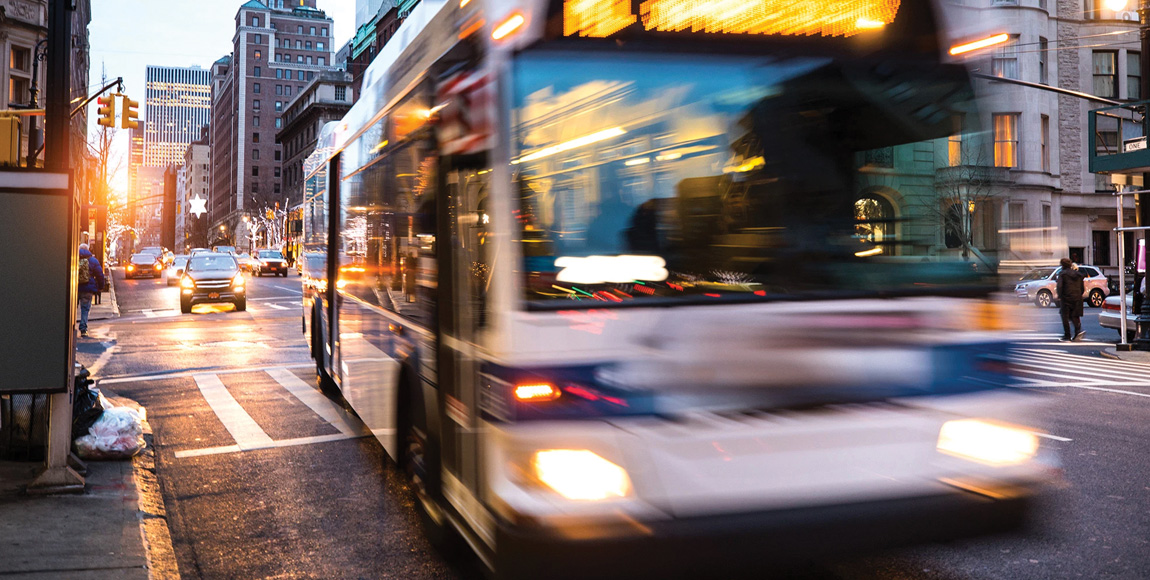Lessons from the Big Apple

Columnist Vaughan Mostert has been riding around on buses in both London and New York! He has some fascinating lessons to share from his experiences
London and New York have two of the largest public-transport systems in the English-speaking world. Although both networks receive fierce criticism from locals, South Africa can learn a lot from them. Their subways keep both cities functioning, but the good work being done below ground level is cancelled out on the surface by choked streets. In both cities – especially the Big Apple – the biggest cause of congestion is the single-occupant vehicle.
London has introduced a congestion charge and New York is planning to do the same by 2021, the first city in the United States (US) to try it, however, if London’s experience is an indicator, I don’t think it will be enough. In New York, ride-sharing (RS) black limos and yellow metered cabs are the main culprits for clogged traffic. Limos now outnumber the cabs, and the city is the first in the country to cap both groups.
In response to this, RS companies are punting “independent” research conducted by academics at New York universities, who say that RS drivers should earn higher salaries for the work they do which, in turn, would put them in a position to “pump US$ 300 million into the city’s economy”.
According to the research, many RS and taxi drivers are poor immigrants who have made risky investments in new vehicles and are now struggling to recover their costs. Apparently, the value of a taxi medallion has fallen from one-million US dollars to less than half that amount, and several taxi and RS drivers have committed suicide.
While I sympathise with the drivers, I have a problem with this type of academic input, which is nonsense. Please show me a textbook which says the transport industry has a responsibility to provide employment for “poor immigrants”. Rather calculate how much could be saved by reducing New York’s 6 000-strong public-transport fleet (which could be reduced by about 600 buses) if there was less traffic on the roads. The money saved could then be used to pay social grants to poor immigrants.
Lesson 1: South Africa should start setting aside money to pay out people in the overtraded minibus-taxi industry before the better-organised RS and metered taxi groups start putting pressure on us.
Lesson 2: The best fare policy for a coordinated South African transport system is to combine London’s Oyster technology with New York’s fare structure, which is based on flat and equal tariffs for rail and road services.
Lesson 3: If New York can live with heavy traffic delays and still be one of the richest cities in the world, the value of “time saved” by transport projects such as toll roads and the Gautrain is negligible, and has no place in any consultant’s report.
Lesson 4: While New York, itself, has a reasonably integrated bus and rail service, its next-door neighbour, New Jersey, pumps 3 000 buses into Manhattan every weekday in one of the most un-coordinated bus operations anywhere.
Most of the vehicles come through the Lincoln tunnel and end up at the Port Authority bus station – the biggest in the world. The problem, is that each trip carries only 40 passengers. The bus station should be demolished and a transfer facility established in New Jersey from which passengers could transfer, 150 at a time, to electric trolley buses to take them through the tunnel and drop them at many more destinations in Manhattan.
In addition, New Jersey’s ferry feeder buses duplicate New York’s buses in Manhattan, cluttering up the streets.
South Africa is, ironically, in a better position to fix its bus services compared with both London and New York, because there is currently almost nothing to “fix”. We can start from scratch with a brand-new bus network for every city that will reduce the need for expensive new infrastructure.
It involves taking the thousands of buses already on the road and putting them, together with our dysfunctional railway (both the Gautrain and Metrorail), into one system.
Sadly, though, instead of fixing what is already there, South Africa ploughs on into a cul-de-sac with expensive and unsustainable schemes like the Gautrain. We need to do better than this!
Published by
Vaughan Mostert
One Comment
Leave a comment Cancel reply
focusmagsa





I like best the way you take on the bureaucrats and the silly academics. More power to your elbow! Those two groups are the greatest impediment to common sense that has ever bedeviled civilization.